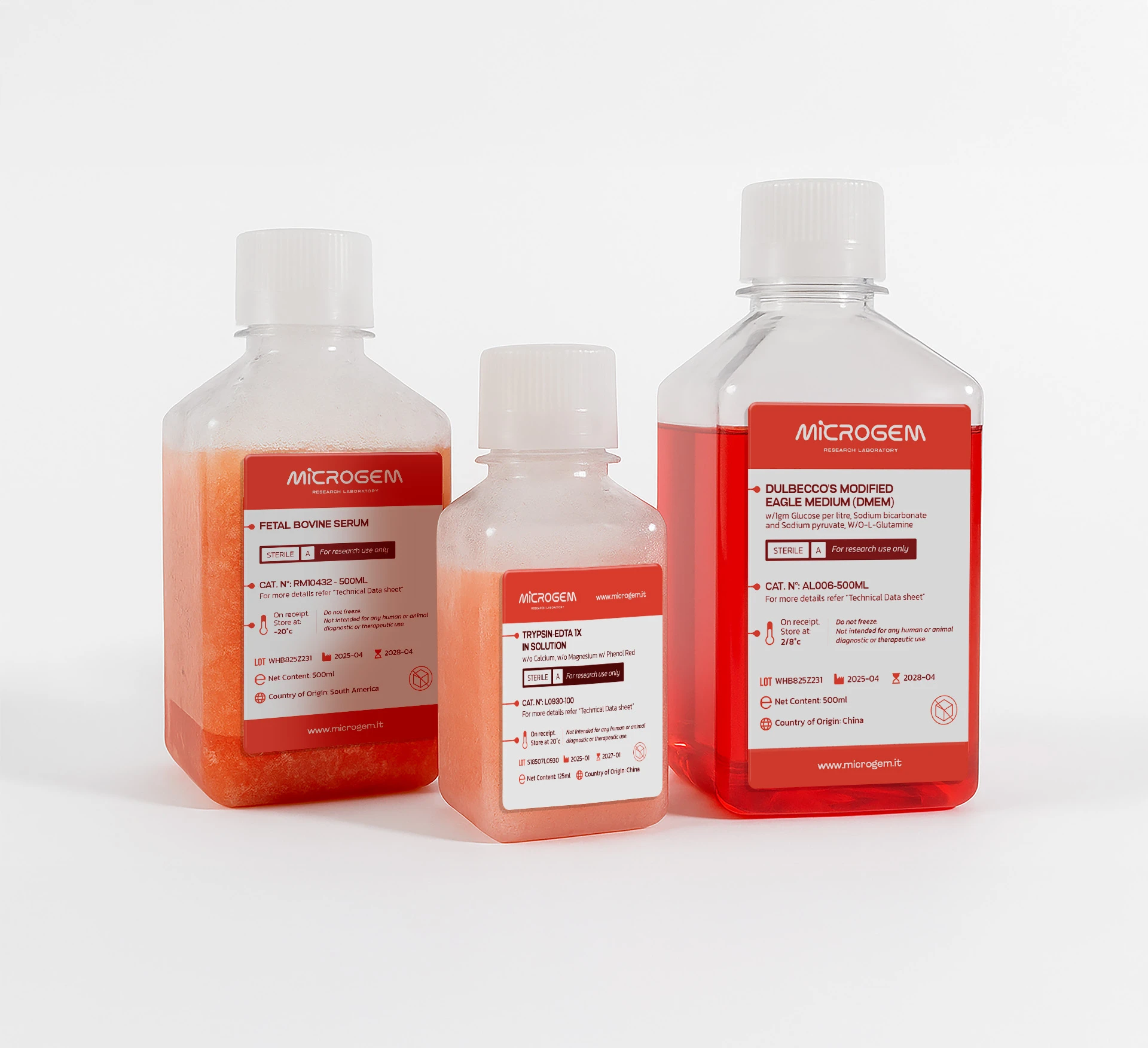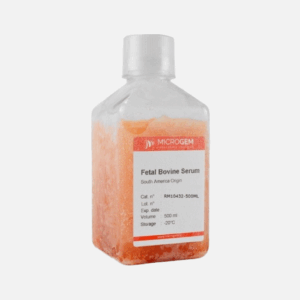FBS, cell culture media, cell culture reagents: il tuo partner per le colture cellulari.
MICROGEM è partner di riferimento nella biologia cellulare, offrendo soluzioni avanzate per le colture cellulari. I reagenti scelti sono una soluzione affidabile, progettati per garantire riproducibilità, purezza e performance elevate.
Grazie a rigorosi controlli di qualità e a una costante spinta all’innovazione, assicuriamo risultati affidabili per ogni applicazione.

Le colture cellulari
secondo MICROGEM
Prodotti scelti per soddisfare i più alti standard richiesti nei settori di:
Biologia cellulare di base
Ricerca farmacologica e sviluppo di nuovi farmaci
Vaccini e terapie avanzate
Ingegneria tissutale e medicina rigenerativa
Promozioni in corso.
Perché scegliere MICROGEM
Competenza
Un team con esperienza scientifica consolidata, capace di anticipare i bisogni della ricerca.
Efficienza
Un unico interlocutore per un accesso diretto alle migliori soluzioni tecnologiche.
Affidabilità
Oltre 20 anni di esperienza, con un supporto tecnico sempre al tuo fianco.
Innovazione
Uno sguardo sempre rivolto al futuro, per offrirti prodotti all’avanguardia.
